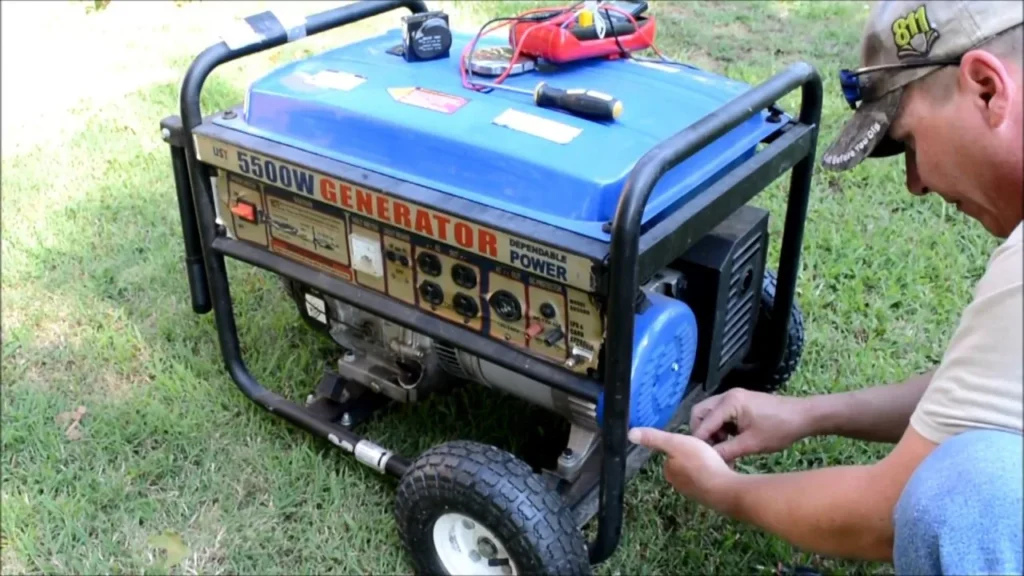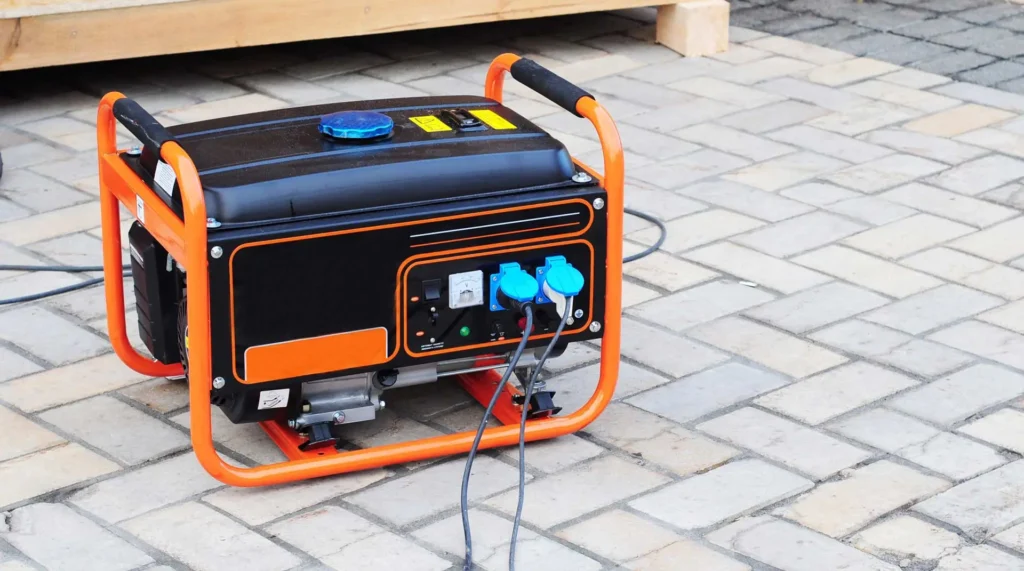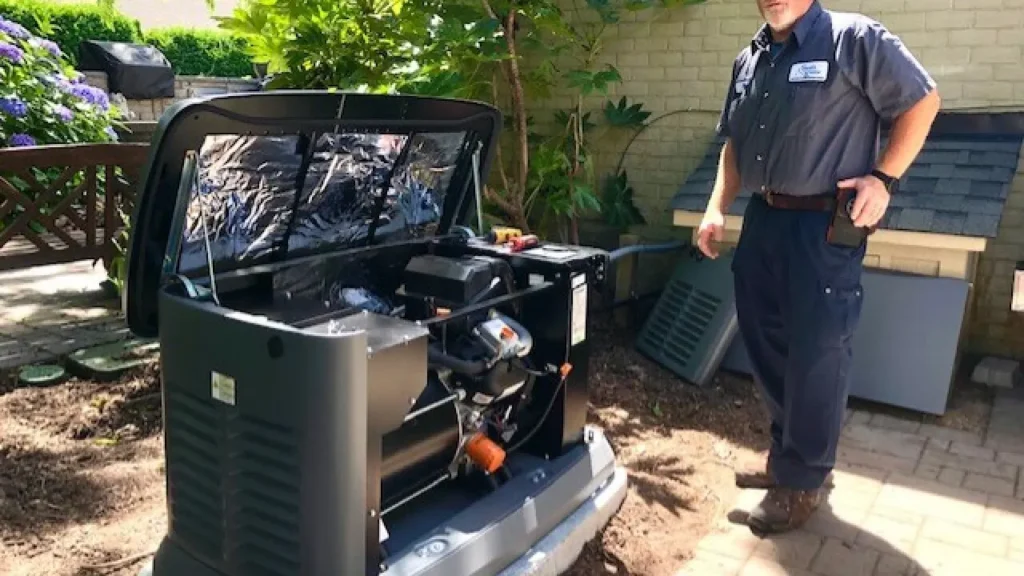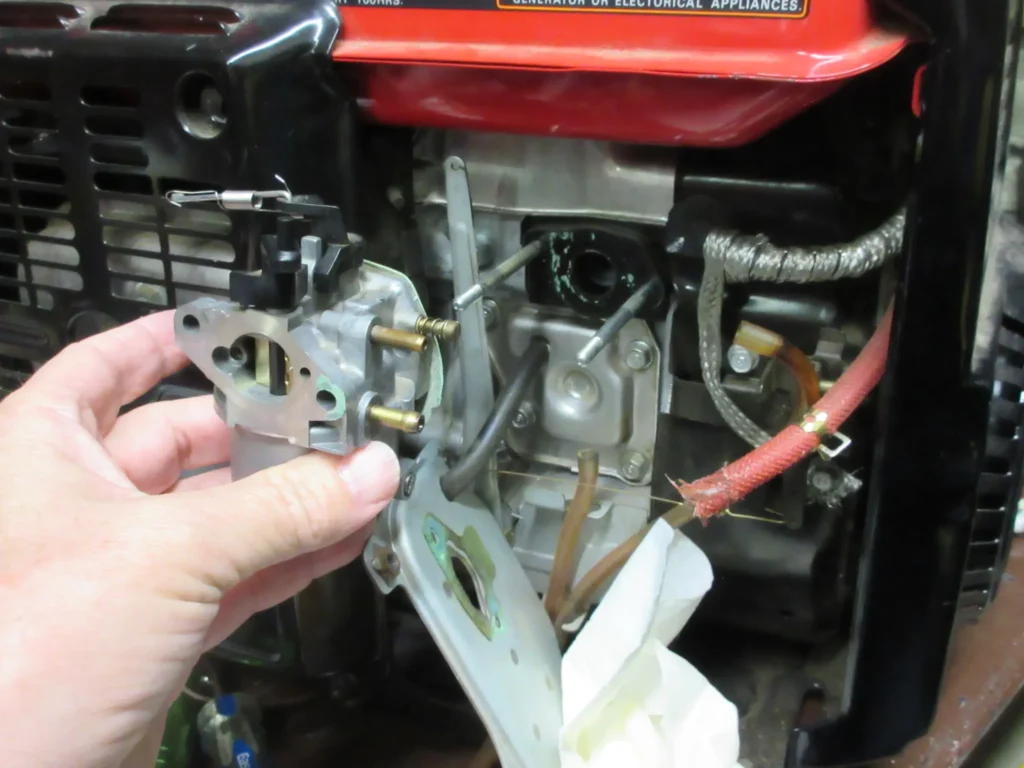At Grounded Electric, our team helps homes and businesses keep their power safe and reliable. To fix a generator not producing power, first check for simple problems like tripped breakers, loose wires, or poor contact at the terminals.
If that does not solve it, the issue may be a loss of residual magnetism, a bad automatic voltage regulator, or a faulty capacitor.
These problems can stop a generator from producing electricity even when the engine runs. Some fixes are simple, but if your generator is not producing power, professional repair is the safest choice. With over 30 years of experience, Robert “Bobby” Mulholland and project manager Barret Abramow lead our team with trusted expertise.
Key Takeaways
- A generator running but not producing power often points to electrical issues such as loss of residual magnetism, a faulty automatic voltage regulator, or bad wiring connections.
- Quick checks like resetting breakers, inspecting loose connections, and cleaning terminals can sometimes restore generator output before professional repair is needed.
- Residual magnetism is essential for producing electricity, and methods like battery flashing or drill backfeeding can safely restore it when handled by trained technicians.
- Portable, inverter, and Honda generators each face unique issues, including long-term storage problems, sensitive inverter boards, or tripped GFCI outlets.
- Regular maintenance, proper shutdown practices, and seasonal storage care greatly reduce the chances of a generator producing no power or low voltage.
Why Is My Generator Running but Not Producing Power?
When a generator is running but not producing, the engine sounds normal, but no power reaches your devices. This is usually not a fuel or engine issue. Most of the time, it is a problem inside the electrical system.
Common signs include lights not turning on, the voltmeter showing zero, or appliances not starting. Even when running, your generator sounds fine, but the lack of power means something is wrong.
If you ever face a case where your generator won’t stay running, that can point to a different issue, but still requires fast attention. Fixing problems quickly helps prevent damage and avoid costly generator repair.

Common Causes of Power Loss
The main reasons a generator does not produce power include:
- Loss of residual magnetism
- Faulty automatic voltage regulator
- Bad capacitor or circuit breaker
- Wiring problems or loose connections
These issues affect how power flows through the system. Below, we explain each one in detail.
Loss of Residual Magnetism
Generators depend on a small amount of magnetism in the rotor, called residual magnetism. This creates the first magnetic field needed to start producing electricity. If the generator loses it – often after long storage or shutting down under load – the unit can produce no power.
Without residual magnetism, the generator output voltage cannot rise. Even though the moving electrical parts are working, magnetism is enough to produce only a spark, not steady power. Technicians can restore this safely when needed.
Faulty Automatic Voltage Regulator (AVR)
The automatic voltage regulator keeps the generator’s output voltage stable. If it fails, the generator may produce no power or show uneven readings.
A weak or damaged AVR makes electrical conductors unstable. This prevents the generator from producing electricity consistently. In most cases, it must be tested and replaced by a professional.
Bad Capacitor or Circuit Breaker
Capacitors control current flow, and circuit breakers stop overload. When either part fails, the generator may produce a small surge at startup and then stop.
In some cases, a circuiting wire error or blockage can also block energy transfer. Replacing a bad capacitor or breaker usually restores normal power. In some cases, a Generac generator that starts and then dies may also be linked to electrical faults in these parts.
Wiring or Connection Problems
Loose wiring or poor contact in the system can stop power from flowing. Over time, particles, debris or blockages build up at the terminals and cause resistance.
Even if the engine runs, power cannot move through the electrical conductors. This often leads to a generator not producing power while running. An inspection can confirm and correct the issue.
For quick reference, here is a summary of common problems and fixes:
Generator Troubleshooting
Quick Checks Before Calling a Professional
Try these simple steps first:
- Reset circuit breakers and confirm the generator is not overloaded.
- Inspect wires for loose connections.
- Check the voltmeter to confirm the generator is producing electricity.
- Clean terminals of particles, debris, or blockages.
If the generator does not produce power after these checks, move on to detailed troubleshooting or call a technician.
Troubleshooting and Fixes
Once the basic checks are done, you can look deeper into possible fixes.
How to Restore Residual Magnetism in a Generator
There are two main methods used by technicians:
- Battery Flashing Method – Connect a 12-volt battery briefly across the generator’s field terminals. This recharges the magnetic field.
- Electric Drill Method – Plug in a drill, spin the chuck by hand, and let it backfeed voltage into the system. This restarts the magnetic cycle.
These methods must be done carefully to avoid damage. They are safe only when handled by trained electricians.
If residual magnetism is restored, the generator output voltage will rise and start producing electricity again. At Grounded Electric, Bobby Mulholland often handles these advanced repairs with care.
Can You Remagnetize a Generator?
Yes. Remagnetizing applies direct current to rebuild the small amount of magnetism needed for power. Once restored, the generator can produce electricity normally.
This process is best done by licensed professionals, since mistakes can cause more damage.
Step-by-Step Troubleshooting Guide
To check a generator for problems:
- Look at breakers and reset switches.
- Check for loose wiring or poor contact.
- Clean connections to remove particles, debris, or blockages.
- Test the automatic voltage regulator.
- Check the capacitor with a meter.
Barret Abramow often reminds homeowners that regular maintenance prevents many of these issues before they start.
How to Test a Generator for Power Output
Use a voltmeter or load tester. Connect it and run the generator. If the reading is zero or unstable, there is an electrical fault.
Testing this way shows whether the issue is simple, like a loose connection, or serious, needing generator repair.
Special Generator Cases
Different generators have unique problems.
Portable Generator Not Producing Power
Portable models often lose residual magnetism during long storage, leaving them running but not producing electricity. Running the unit regularly keeps magnetism strong enough to produce a steady output. Clogged filters, dirty wiring, or particle debris or blockages can also cause power loss.

Inverter Generator Not Producing Power
Inverter generators rely on advanced electronics. Problems include blown fuses, inverter board failure, or circuiting wire error or blockage. These issues need professional repair, since the electronics are sensitive and costly.
Honda Generator Not Producing Power
Honda generators may fail because of tripped GFCI outlets, bad automatic voltage regulators, or loose wiring. Resetting a GFCI is a quick first step. If the generator does not produce power after this, the AVR or wiring should be tested by a licensed electrician.
Generator Not Producing Enough Power
Sometimes a generator produces electricity, but not enough for your needs.
Signs of Overloading
If too many devices are connected, the generator may not produce enough power is common. Lights may dim or equipment may slow down. Reducing the load usually solves this.
Performance Issues and Fixes
Dirty filters, poor fuel, or worn parts reduce performance. Regular maintenance stops these problems from getting worse.
Generator Produces Low Voltage
Low voltage often points to a weak magnetic field or a failing AVR. In these cases, magnetism is enough to produce limited power but not a stable output. Testing confirms the problem.
Preventing Generator Problems
Prevention saves time and money.
Safe Shutdown Practices
Always disconnect loads before shutting down the generator. This protects residual magnetism and prevents damage.
Routine Maintenance Tips
Schedule regular maintenance with a licensed provider. Checks should include loose wires, cleaning of particle debris or blockages, and verifying the generator output voltage.

Storage and Seasonal Care
Keep the generator in a clean, dry place. Run it now and then to maintain a small amount of magnetism. For more guidance on frequent issues, review these common generator problems that many owners face.
When to Call a Licensed Electrician
Some problems need expert help. If you face low voltage, repeated circuiting wire error or blockage, or a failed automatic voltage regulator, call Grounded Electric.



